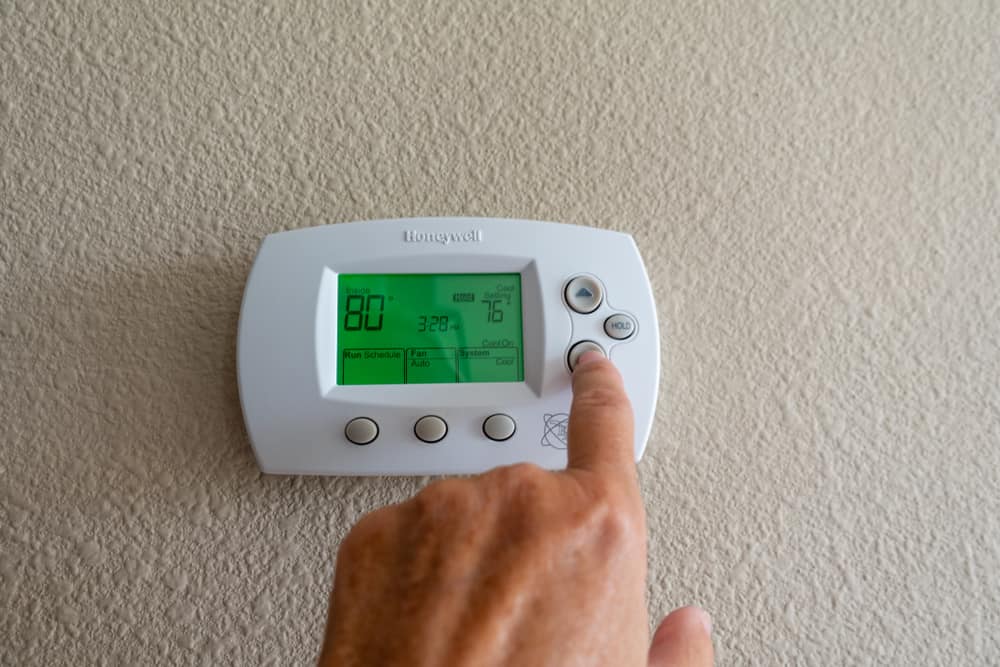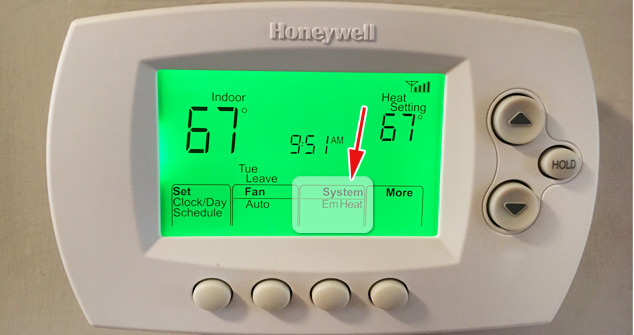If your auxiliary heat indicator is on, it means your heat pump needs a little help reaching its target temperature setting. Aux heat comes from the same heat source as emergency heat, but aux heat works together with your heat pump, so it’s less expensive than emergency heat. Typically, your heat pump will energize the auxiliary heat strip inside your secondary heating source to help reach its set temperature more quickly. Basically, if your heat pump is struggling to maintain its goal temperature, your aux heat will turn on and give your heat pump a boost.
Your thermostat determines when the auxiliary heat gets energized. When the temperature inside your home drops a certain amount below the goal temperature (usually 1.5-2 degrees), your thermostat energizes auxiliary heat. The aux heat indicator on your thermostat lets you know when this is happening. Aux heat will turn off once your home reaches the thermostat set point.
What is a heat pump?
A heat pump warms your home by pulling in heat from the outdoors, but it can also cool your home by expelling heat from your living space to the outside. Heat pumps don’t create heat or cold air by themselves. They transfer the warmth or coolness from one place to another.
This type of system uses electricity and refrigerant to create a comfortable temperature within your home. To transfer heat from one place to another, the refrigerant flows back and forth from the indoor unit (your air handler) to the heat pump condenser (your outdoor unit).
In mild climates, heat pumps are an energy-efficient way to heat and cool your home. A backup heating source is needed, however, for moments when the temperature suddenly drops. When those freezing temperatures occur, auxiliary heat makes its seasonal debut.

What to do if auxiliary heat turns on?
- Auxiliary heat should be a temporary setting and automatically turn off once your home warms up. Check back in 30 minutes or so to see if it has turned off on its own.
- Only turn your heat up two degrees at a time. Auxiliary heat can be triggered if your home is three degrees lower than your set temperature.
- Do not turn on emergency heat unless it’s actually an emergency. Give auxiliary heat time to work its magic. Emergency heat requires a lot more energy and is more expensive.
- Make sure your aux heat indicator turns off when the outside temperature reaches 40 degrees or higher. If it remains on, you may have a malfunction in your heat pump and need to call an HVAC service provider.



